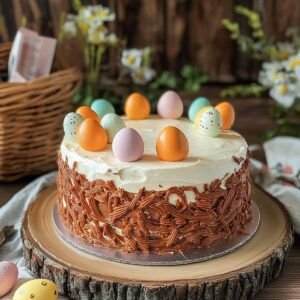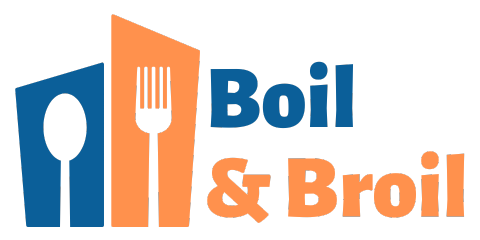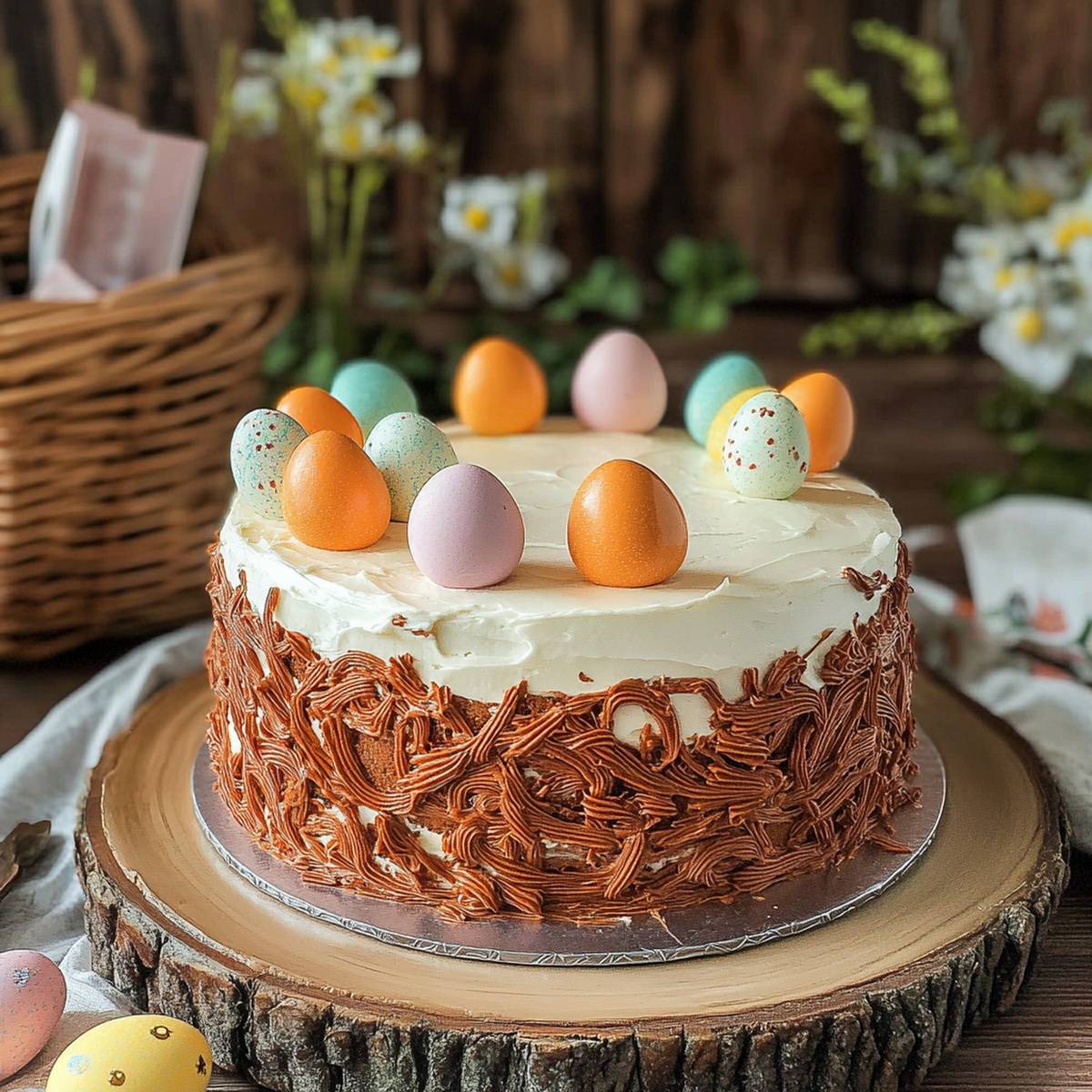The Most Adorable Gingerbread Easter Cake Recipe Ever
Sweet memories of childhood spring to mind with this delightful gingerbread Easter cake that combines warm spices and festive cheer.
Cozy aromas will fill your kitchen as you mix traditional ingredients into a delectable dessert.
Generations have cherished similar recipes passed down through family cookbooks.
Soft crumbs infused with cinnamon, nutmeg, and ginger promise a memorable treat.
Decorative pastel frosting adds a playful touch to this classic confection.
Each slice tells a story of comfort and celebration.
You’ll want to gather loved ones and savor every delicious moment.
Gingerbread Easter Cake: Warm Spice Celebration
What You’ll Need for Gingerbread Easter Cake
Dry Ingredients:Wet Ingredients:Preparation Ingredients:How to Bake and Decorate a Gingerbread Easter Cake
Step 1: Prepare The Oven And Baking Pans
Set your oven to 350F (175C).
Grease two round baking pans thoroughly to ensure easy cake removal.
Step 2: Mix Dry Ingredients
Grab a large bowl and whisk together:Step 3: Create Wet Mixture
In a separate bowl, blend sugar and melted butter until smooth and creamy.
Add eggs one at a time, mixing completely after each addition.
Stir in molasses until well incorporated.
Step 4: Combine Batter
Slowly fold dry ingredients into wet mixture.
Mix gently until just combined, being careful not to overmix the batter.
The key is achieving a smooth, consistent texture without creating tough cake layers.
Step 5: Fill Baking Pans
Divide batter evenly between prepared pans.
Use a spatula to smooth the tops, ensuring an even surface for beautiful cake layers.
Step 6: Bake The Cake
Place pans in preheated oven.
Bake for 25-30 minutes.
Check doneness by inserting a toothpick into the center – it should come out clean.
Step 7: Cool And Release
Allow cakes to cool in pans for 10 minutes.
Carefully transfer to wire racks to complete cooling.
Your gingerbread Easter cake is ready to be decorated or served!
Tips for Spiced Layers and Sweet Frosting
Storing and Serving Gingerbread Easter Cake
Pairing Picks for Easter Spice Cake
Creative Variations on Gingerbread Easter Cake
FAQs
Yes, you can substitute molasses with honey or maple syrup for a similar depth of flavor and moisture.
Ground ginger is key to creating the classic gingerbread taste, but if unavailable, you can use fresh grated ginger as an alternative.
Be careful not to overmix the batter and avoid overbaking. Check the cake a few minutes before the recommended baking time and remove when a toothpick comes out with a few moist crumbs.
Yes, replace the regular flour with a gluten-free all-purpose flour blend to make the recipe suitable for those with gluten sensitivities.
Print
Gingerbread Easter Cake Recipe
- Total Time: 45 minutes
- Yield: 8 1x
Description
Springtime meets nostalgia in this delightful Gingerbread Easter Cake, where warm spices dance with festive charm. Layers of rich, moist gingerbread embrace creamy frosting, promising a sweet celebration that will enchant family and friends at your holiday gathering.
Ingredients
Main Ingredients (Dry):
- 2 cups (240 grams) all-purpose flour
- 1 tablespoon ground ginger
- 1 teaspoon cinnamon
- 1/2 teaspoon nutmeg
- 1 teaspoon baking powder
- 1 cup (200 grams) sugar (granulated or brown)
Wet Ingredients:
- 2 eggs
- 1/2 cup (170 grams) molasses
- 1/2 cup (113 grams) unsalted butter
Instructions
- Warm the oven to 350F (175C) and thoroughly coat two circular cake molds with butter or cooking spray.
- Sift together flour, ground ginger, cinnamon, nutmeg, baking powder, and salt in a spacious mixing vessel.
- Cream sugar and melted butter in a separate bowl until smooth and uniform. Incorporate eggs individually, ensuring complete integration after each addition. Fold in molasses until mixture appears glossy and well-blended.
- Gently fold dry ingredients into wet mixture, stirring minimally to prevent tough texture. Mix until ingredients are just combined, maintaining a light, airy consistency.
- Evenly distribute batter between prepared pans, using a spatula to create a level surface.
- Position pans in preheated oven and bake for 25-30 minutes. Check doneness by inserting a clean toothpick into cake center – it should emerge without batter clinging to it.
- Remove cakes and allow to rest in pans for 10 minutes, then carefully transfer to wire cooling racks to reach room temperature.
Notes
- Adjust spice levels by increasing or decreasing ground ginger and cinnamon to suit personal taste preferences.
- Swap traditional butter with coconut oil for a dairy-free version that maintains rich moisture and tender crumb.
- Consider adding chopped crystallized ginger or dark chocolate chips to enhance flavor complexity and create surprising texture variations.
- Use gluten-free flour blend as a direct substitute to make the cake suitable for those with wheat sensitivities without compromising cake’s delicate structure.
- Prep Time: 15 minutes
- Cook Time: 30 minutes
- Category: Desserts
- Method: Baking
- Cuisine: American
Nutrition
- Serving Size: 8
- Calories: 200
- Sugar: 15 g
- Sodium: 150 mg
- Fat: 8 g
- Saturated Fat: 4 g
- Unsaturated Fat: 2 g
- Trans Fat: 0 g
- Carbohydrates: 30 g
- Fiber: 1 g
- Protein: 3 g
- Cholesterol: 50 mg


Jack Sullivan
Founder & Culinary Storyteller
Expertise
Single-recipe development with a narrative approach, Culinary storytelling and food history, Seasonal and regional ingredient utilization, Home cooking techniques adapted for modern kitchens
Education
New England Culinary Institute (Montpelier, VT)
Certificate in Culinary Arts
Focused on farm-to-table cooking, sustainable practices, and modern plating techniques.
Asheville-Buncombe Technical Community College
Associate Degree in Culinary Arts
Emphasized Southern Appalachian cuisine and local ingredient sourcing.
Jack grew up surrounded by smoky skillets and handwritten recipes in the mountains of North Carolina. His roots in Appalachian cooking shaped the way he sees food – as something that connects people, tells a story, and holds meaning.
With hands-on training and a background in sustainable, regional cooking, Jack started Boil And Broil to make meaningful meals more accessible. He’s all about one-dish recipes that are simple to follow but rich with flavor and history.